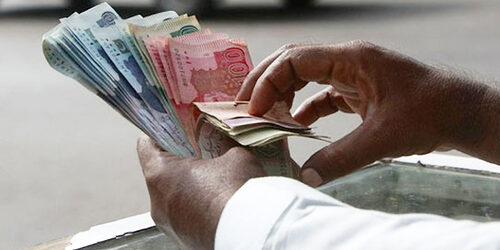The country’s development and defence budgets have shrunk significantly over the past two years and spending at a reduced level will remain almost flat in the medium term, that is until 2026, in line with fiscal consolidation measures under the ongoing International Monetary Fund (IMF) programme.
Documents released by the IMF after revival of its programme about two weeks ago show that Pakistan’s defence budget has declined from 3 per cent of GDP in FY2017-18 to 2.9pc last year and would drop to 2.8pc of GDP this year. The spending will continue at the rate of 2.8pc of GDP until FY2026.
Similarly, the country’s development programme that stood at 4.2pc of GDP in FY2017-18 plunged to 2.7pc of GDP last year and 2.6pc of GDP this year. The development expenditure is estimated to slightly increase to 2.7pc in the next fiscal year and then remain between 2.8pc and 2.9pc by 2026, subject to any improvement in revenue collection.
This is part of the overall expenditure consolidation. The overall expenditure estimated at 22.9pc of GDP this year has come down from 23.1pc of GDP last year. This would further come down to 22.5pc next year, followed by 21.4pc in FY2022-23.
IMF documents unveil government’s expenditure consolidation measures
Based on the agreed programme matrix, the IMF has forecast that Pakistan’s total expenditure will ultimately be contained at 20.5pc of GDP by 2025-26.
However, in absolute terms defence spending will keep increasing nominally despite a decline as a percentage of GDP. For example, defence expenditure that was Rs1.213 trillion last year is projected to increase to Rs1.283tr during the current year.
Next year, Rs1.444tr will be allocated for defence, an increase of 12pc, which actually comes down to almost 3pc of GDP after adjustment for inflation rate of 8-9pc.
The documents suggest the current year’s federal PSDP has been slashed by almost Rs150 billion to Rs503bn against a budget allocation of Rs650bn, which has actually dropped from 1.7pc of GDP in 2017-18 to 1.1pc of GDP during the current year.
The provincial development allocations of Rs784bn have also been reduced to Rs665bn during the current year. They have already been reduced from 2.5pc of GDP in 2017-18 to 1.5pc this year and would remain almost at that level for the next five years.
The government has given an undertaking to the IMF to phase out the temporary refinancing schemes introduced as part of emergency response for Covid-19 as the crisis abates. In the context of supporting financial markets and businesses during the Covid-19 pandemic, the State Bank of Pakistan (SBP) has substantially expanded its refinancing schemes, introducing three new facilities and expanding the coverage of an existing facility.
By December 2021, the SBP will require banks to provide 5pc of their domestic private sector lending for the financing of houses and construction of buildings. To incentivise banks to meet the target, the SBP has announced that banks achieving their quarterly targets will be permitted to lower their cash reserve requirements in the subsequent quarter.
The government considers this to be a temporary measure for supporting private sector lending, which is low compared to peer countries and is hindering private sector growth.
The authorities, however, concede that further steps to improve the housing and construction sector — including an improved bankruptcy regime and more comprehensive property registry system — were necessary. In this context, the government has committed to the IMF that “the Supreme Court… (will) vacate the stay order against the foreclosure law”.
The government has advocated that its fiscal policies should remain centred on an ambitious revenue mobilisation strategy to ensure debt sustainability while creating space for social and development spending. As the severe setback from the Covid-19 shock is over, the government has committed to broadening the tax base and gradually increasing the tax-to-GDP ratio by more than 3pc of GDP through to FY2023, with a cumulative fiscal primary adjustment of 3.3pc of GDP.







